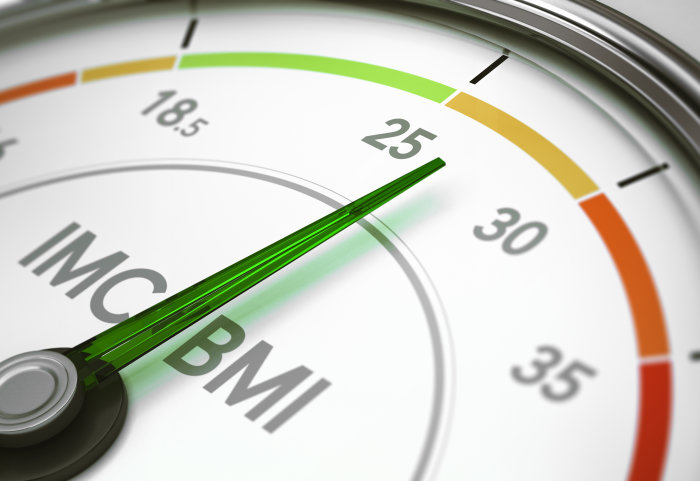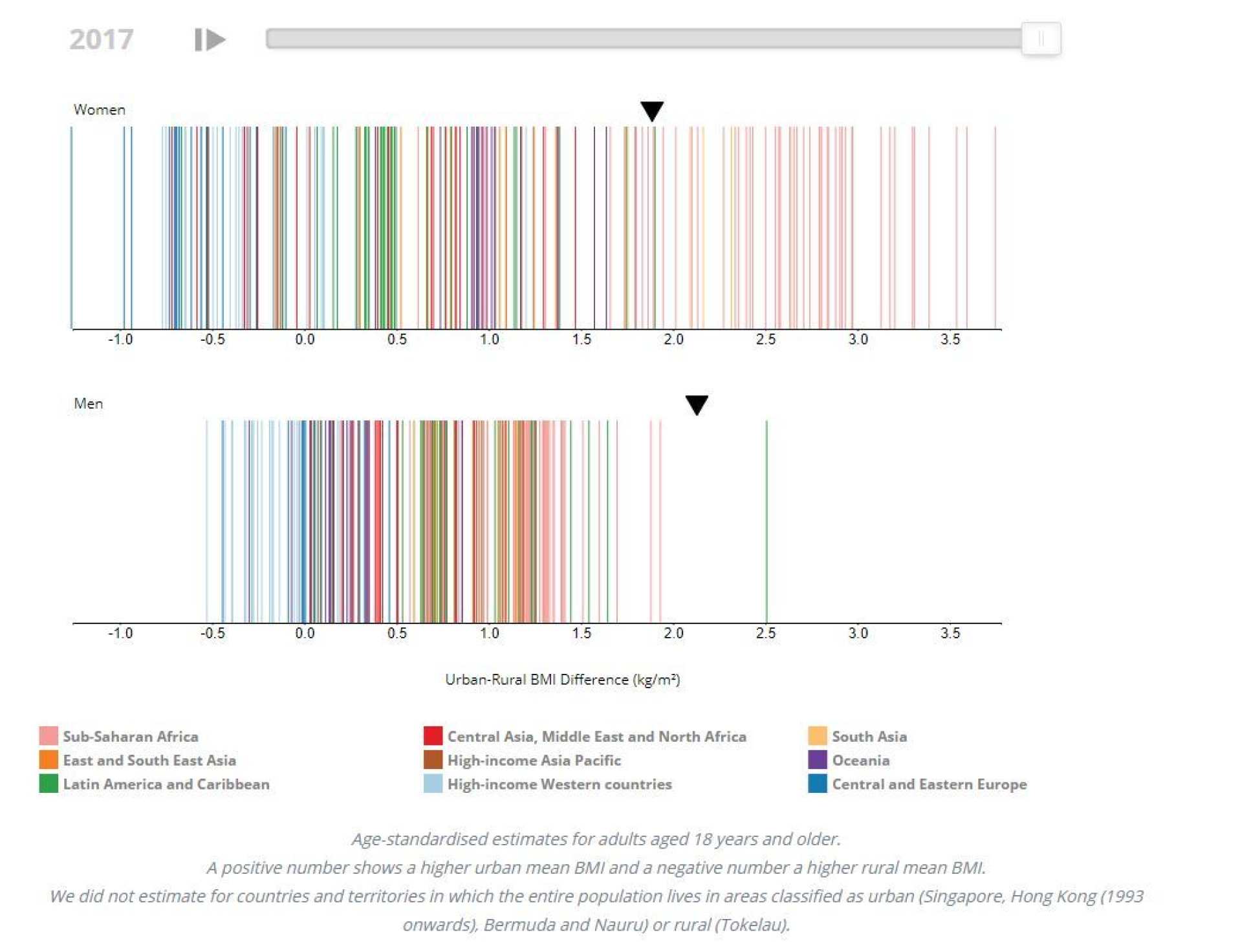

Obesity is increasing more rapidly in the world’s rural areas than in cities, according to a new study of global trends in body-mass index (BMI).
The research, led by Imperial College London and published in Nature, analysed the height and weight data of more than 112 million adults across urban and rural areas of 200 countries and territories between 1985 and 2017.
Height and weight can be used to calculate BMI, an internationally recognised scale which tells us whether an individual has a healthy weight for their height.
As countries increase in wealth, the challenge for rural populations changes from affording enough to eat, to affording good quality food Professor Majid Ezzati School of Public Health
The study, involving a network of more than 1000 researchers across the world, found that from 1985 to 2017, BMI rose by an average of 2.0 kg/m2 in women and 2.2 kg/m2 in men globally, equivalent to each person becoming 5-6 kg heavier.
More than half of the global rise over these 33 years was due to increases in BMI in rural areas. In some low- and middle-income countries, rural areas were responsible for over 80 per cent of the increase.
The team found that since 1985, average BMI in rural areas has increased by 2.1 kg/m2 in both women and men. But in cities, the increase was 1.3 kg/m2 and 1.6 kg/m2 in women and men respectively.
These trends have led to striking changes in the geography of BMI over the three decades. In 1985, urban men and women in over three quarters of the countries had a higher BMI than their rural counterparts. Over time, the gap between urban and rural BMI in many of these countries shrank or even reversed.
“The results of this massive global study overturn commonly held perceptions that more people living in cities is the main cause of the global rise in obesity,” explains senior author Professor Majid Ezzati of Imperial’s School of Public Health. “This means that we need to rethink how we tackle this global health problem.”

Full visualisations available on the NCD Risc website.
The team found important differences between high-, middle-, and low-income countries. In high-income countries, the study showed that BMI has been generally higher in rural areas since 1985, especially for women. The researchers suggest this is due to the disadvantages experienced by those living outside cities: lower income and education, limited availability and higher price of healthy foods, and fewer leisure and sports facilities.
“Discussions around public health tend to focus more on the negative aspects of living in cities,” says Professor Ezzati. “In fact, cities provide a wealth of opportunities for better nutrition, more physical exercise and recreation, and overall improved health. These things are often harder to find in rural areas.”
Meanwhile, rural areas in low- and middle-income countries have seen shifts towards higher incomes, better infrastructure, more mechanised agriculture and increased car use, all of which bring numerous health benefits, but also lead to lower energy expenditure and to more spending on food, which can be processed and low-quality when sufficient regulations are not in place. All these factors contribute to faster increase in BMI in rural areas.
“As countries increase in wealth, the challenge for rural populations changes from affording enough to eat, to affording good quality food,” adds Professor Ezzati.
The main exception to the global trend was sub-Saharan Africa where women gained weight more rapidly in cities, possibly because of more low-energy work (such as office work), less need for physical domestic tasks such as collecting firewood and fetching water, shorter commutes and greater access to processed foods.
Regional and country data on BMI in rural and urban populations
- Nationally, BMI decreased slightly between 1985 and 2017 among women in twelve countries in Europe (Greece, Spain, Lithuania, Czech Republic, Italy, Portugal, Serbia, France, Malta) and Asia Pacific (Nauru, Singapore and Japan). At the other extreme, it increased by more than 5 kg/m2 in women in Egypt and Honduras.
- Among men, BMI increased in every country, with the largest increases in Saint Lucia, Bahrain, Peru, China, Dominican Republic and the USA, all by more than 3.1 kg/m2.
- Rural women in Bangladesh had the lowest BMI recorded in the study in 1985, at 17.7 kg/m2. Men living in rural Ethiopia had the lowest male BMI at 18.4 kg/m2, also in 1985.
- Urban women from the US South Pacific territory of American Samoa had the highest BMI recorded, at 35.4 kg/m2 in 2017. Rural men from the same country were highest for males, at 34.6 kg/m2 also in 2017.
- In 2017, urban women and men in sub-Saharan Africa weighed more than their rural counterparts by a bigger margin than anywhere else, especially women in west African countries like Niger, Burkina Faso, Togo and Ghana.
- Rural women in central and eastern European countries were heavier than their urban counterparts by the biggest margin – around 1 kg/m2 or more in Belarus, Czech Republic and Latvia. This gap has remained largely unchanged since 1985.
- For rural men, the biggest margins of rural over urban BMI were in Sweden, Czech Republic, Ireland, Australia, Austria and the USA – all with rural BMI more than 0.35 kg/m2 higher than urban BMI.
The research was funded by the Wellcome Trust, the Medical Research Council, the Royal Society and the Academy of Medical Sciences.
-
“Rising rural body-mass index is the main driver of the global obesity epidemic in adults” by NCD Risk Factor Collaboration (NCD-RisC) is published in the journal Nature.
Full visualisations available on the NCD Risc website.
Supporters




Article text (excluding photos or graphics) © Imperial College London.
Photos and graphics subject to third party copyright used with permission or © Imperial College London.
Reporter
Ryan O'Hare
Communications Division

Contact details
Tel: +44 (0)20 7594 2410
Email: r.ohare@imperial.ac.uk
Show all stories by this author




Leave a comment
Your comment may be published, displaying your name as you provide it, unless you request otherwise. Your contact details will never be published.